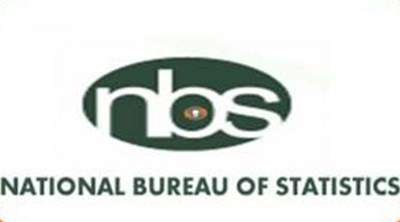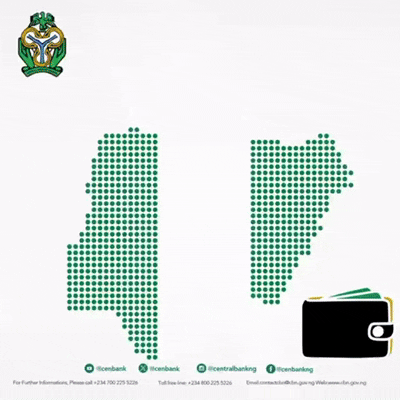Manufacturers, Business Owners and some banks may have been jolted by the retention of the anchor rate, Monetary Policy Rate at 27.5 percent and the revelations by the Central Bank of Nigeria (CBN) that only eight of the 44 banks currently operating in the country have met the required recapitalization requirements eight months to the deadline.
From The Street, (FTS) some analysts say the sectors, considered as critical for growth and development may experience some heat, just like it happened recently when the June 30 deadline for submission of Capital Restoration Plans by banks led to all manner of competition typified by industry operators issuing notices of assurances of their capabilities and health to the public.
They argue that eight banks, meeting the requirements, after over one year since the announcement, could mean that many of the banks, particularly the tier three ones have alot of work to do unless they are looking the way of mergers and acquisitions option.
But more worrisome is the fact that some of the operators that spoke with metrobusinessnews.com (MBN) expressed fears of backlash of the revelation, as pressures are heightening on the need to meet up well ahead of the deadline, to convince the public that they are doing well.
Also, businesses, including MSMEs, who have been reeling under the high interest rates regime since last year due to sustained high rate of the MPR, have expressed disappointment with the retention of the 27.50 percent as well as other rates at the Tuesday meeting.
They say that giving the reasons advanced by CBN for the retention, the fear that the current discriminatory credit advancement by banks and the dearth of the facilities may linger longer than anticipated.
As at July 23, 2025, Nigeria has a total of 44 licensed commercial, non-interest, and merchant banks, out of which 23 are commercial with international license to meet ₦500 billion recapitalisation, national, ₦200 billion and regional. ₦50 billion.
They are Non-Interest Banks with national authorization ₦20 billion and regional for ₦10 billion.
These requirements, which are to be met latest March 3026, are part of the CBN’s efforts to strengthen the banking sector, enhance financial stability, and support Nigeria’s economic growth ambitions, including the goal of becoming a $1 trillion economy by 2030.
READ ALSO:Coalition Leaders Will Support Whoever Emerges As ADC Presidential Candidate- Amaechi
However, banks that fail to meet these requirements by the March 2026 deadline may face penalties or be required to either downgrade or merge with other institutions
CBN Governor, Olayemi Cardoso, however, said several banks had made significant progress in strengthening their capital base to align with the new regulatory threshold.
Cardoso, who spoke after the two-day Monetary Policy Committee (MPC) meeting, stated that the ongoing recapitalisation initiative is helping to reinforce the sector’s resilience, with key Financial Soundness Indicators (FSIs) showing sustained stability.
He also disclosed that the Committee decided to retain all monetary policy parameters to consolidate the recent gains in inflation control and price stability.
The benchmark Monetary Policy Rate (MPR) remains at 27.50 per cent, with an asymmetric corridor of +500/-100 basis points. The Cash Reserve Ratio (CRR) was maintained at 50.00 per cent for deposit money banks and 16.00 per cent for merchant banks. The Liquidity Ratio was also held steady at 30.00 per .
This decision, the CBN Governor said, was taken to “sustain the momentum of disinflation and sufficiently contain price pressures,” noting that Nigeria has begun recording gradual improvement in inflation.
“We will continue to use every tool available—MPR, CRR, and ensuring an efficient foreign exchange market—to bring down inflation to significant levels,” he said.
Cardoso stated that managing inflation expectations remains a key focus for the Bank, and transparency in policy direction will help guide public and investor sentiment.
READ ALSO:Oil Prices Stabilise After US-Japan Trade Deal
“We are determined to ensure that we use all the different tools at our disposal. Inflation expectations will be managed in a way that the public understands the direction of policy. We are committed to transparency,” he said.
Although CBN insists that the decision to hold rates was to balance inflation control with economic stability, businesses and consumers have continued to navigate a challenging macroeconomic environment.
But most entrepreneurs prefer reduction in interest rates, while expressing concern over the cost of borrowing, with the attendant negative impact of the tight monetary policy on households and businesses.
They further argue that policy measures against rising inflation have not impacted positively on the consumers as prices of food items, in particular, are still high while the purchasing power is being gradually eroded.
Also, at least 11 commercial banks were said to have exceeded the 5 percent regulatory limit for non-performing loans (NPL) in April 2025, due to an industry-wide loan reclassification during annual risk assessment, according to Mustapha Akinwunmi, a member of CBN’s Monetary Policy Committee (MPC).
“The Non-Performing Loans (NPL) ratio rose to 5.62 percent in April 2025, exceeding the 5 percent prudential threshold, largely due to loan reclassifications following annual risk assessments,” Akinkunmi said in a personal statement released after the 300th MPC meeting in May.
The reclassifications, which typically occur as part of year-end credit quality evaluations, caused the industry-wide NPL ratio to rise above the CBN’s 5 percent prudent benchmark. This marks an increase from a year earlier, when only six banks were guilty of the breach. The names of the 11 banks guilty of this breach were not disclosed.
Although Akinwunmi noted that the breach reflects a more accurate accounting of credit risk rather than a sudden deterioration in asset quality, analysts say, the sustained tight monetary policy measures are majorly responsible.
Infact, according to him, the CBN might consider temporary forbearance measures for sectors like oil and gas that are more exposed to global shocks.
“Although, the suggestion may be necessary, but could mean policy summersault, considering the fact that CBN is currently trying to remove some banks from it through insistence on submission of Capital Restoration Plans by banks,” says an analyst
Friday Ameh, Lagos based analyst says, with the sustained higher rates, large chunk of banks’ cash are starched with CBN and the banks are effectively left with less than 30 percent to trade with. In that case, one would not blame the banks for charging higher interest rates and in some cases discriminate, since what matters now are the risk elements inbolved.”
Speaking further, he said the ripple effects of higher rate retention, fewer number of banks meeting the financial regulatory threshold, with about eight months to the deadline and rising NPL due to defaults as a result of high interest rate due to high cost of doing business, as a result of lack of electricity, could affect negatively on these critical sectors of the economy.
Some of the business owners and manufacturers who spoke with MBN suggested, as a way of assisting the MSMEs, that CBN should either bring down interest rates to single digits or create a special intervention fund for them, which they say, could be effectively monitored, considering the level of transparency in the operations of CBN as exhibited by Cardoso the current Governor so far.










